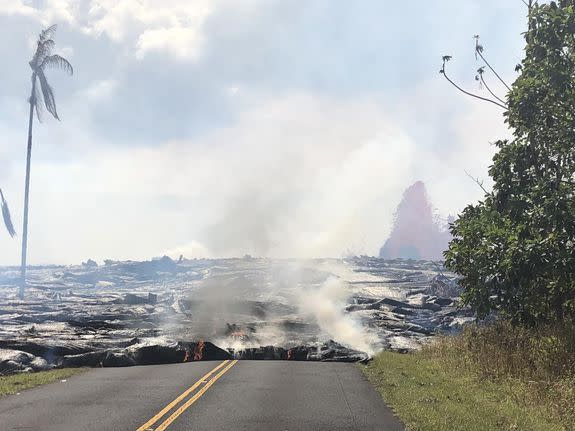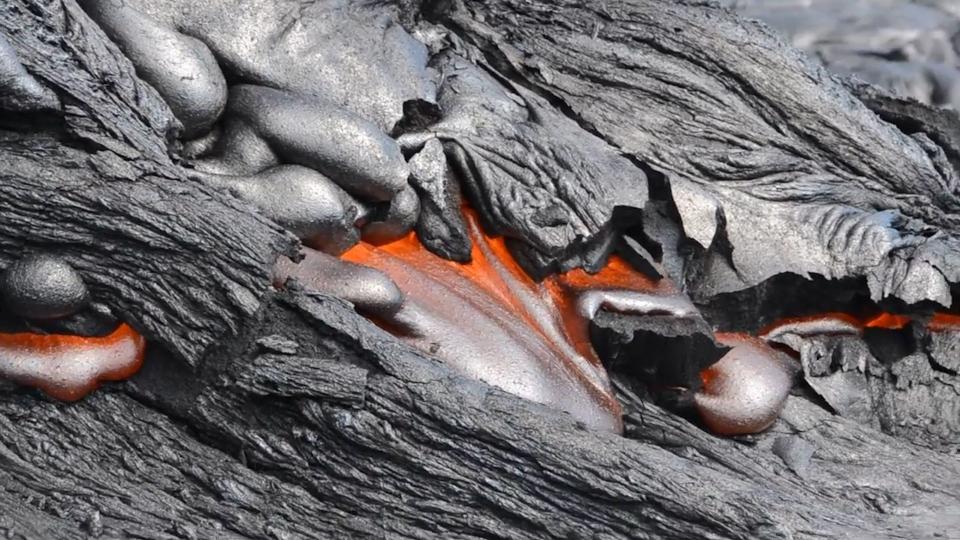Can I roast a marshmallow over lava?

At more than 2,000 degrees Fahrenheit, the lava oozing out of Hawaii's Kilauea volcano will easily toast a marshmallow, but that doesn't mean you should go out and start making volcanic s'mores.
On Monday, U.S. Geological Survey (USGS) explained on Twitter that roasting marshmallows over scorching, molten rock is not a great idea for a multitude of reasons.
SEE ALSO: Hawaii's Kilauea volcano could keep erupting for months. Here's why.
"Is it safe to roast marshmallows over volcanic vents?," Twitter user Jay Furr asked the USGS Volcanoes account on Monday.
"Erm...we're going to have to say no, that's not safe. (Please don't try!)," the USGS said in response.
"If the vent is emitting a lot of SO2 [sulfur dioxide] or H2S [hydrogen sulfide], they would taste BAD. And if you add sulfuric acid (in vog [volcanic smog], for example) to sugar, you get a pretty spectacular reaction."
Erm...we're going to have to say no, that's not safe. (Please don't try!) If the vent is emitting a lot of SO2 or H2S, they would taste BAD. And if you add sulfuric acid (in vog, for example) to sugar, you get a pretty spectacular reaction.
— USGS Volcanoes🌋 (@USGSVolcanoes) May 29, 2018
Just stepping on or near fresh lava flows is inherently dangerous for a variety of reasons, not least because heated, molten rock might still be present under a thin crust of deceptively-cooled and blackened rock.
Kilauea is one of the few places on Earth where people can often view lava flows from a safe distance in marked locations.
But entering active lava flow areas, or places where lava has recently flowed, is kind of stupid, at best. As national park service ranger Shyla explains, the hazards include emissions of toxic gases, unexpected explosions, flying debris (which include deadly lava bombs), and collapses of land — notably near the ocean.
But even if someone were to venture near freshly laid lava and toasted a marshmallow, the sticky treat would likely be disgusting.

Image: usgs
As the USGS noted in their tweeted reply, volcanic vents don't just spew lava, they release gases like sulfur dioxide and hydrogen sulfide, which make for a nasty coating.
Both gases are colorless, but hydrogen sulfide carries an "offensive odor," says the USGS, similar to the smell of a sewer, or farts. If the rotten egg-like smell is present, it's a good idea to leave the area.
"Exposure to 500 ppm (parts per million) can cause a human to fall unconscious in 5 minutes and die in an hour or less," said the USGS.
And if the nearby vent is emitting sulfur dioxide, it won't be a particularly pleasant experience if you're around, as the gas irritates eyes and respiratory systems.
Often, sulfur dioxide emitted from Kilauea creates volcanic smog, or "vog," so the USGS half-joked that a chemical reaction might occur between the sulfur-rich vog and the sugar-rich marshmallows. A fun classroom experiment involves adding sulfuric acid to sugar, which (after stirring) creates a mass of hot, black foam.
But, keep those experiments to the classroom, not an active lava field.
WATCH: Get lost watching this mesmerizing lava gush and cool


